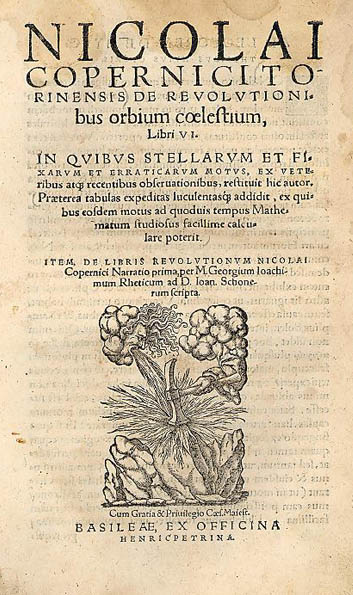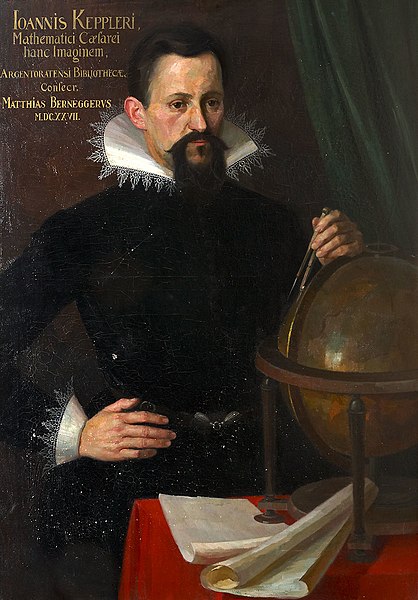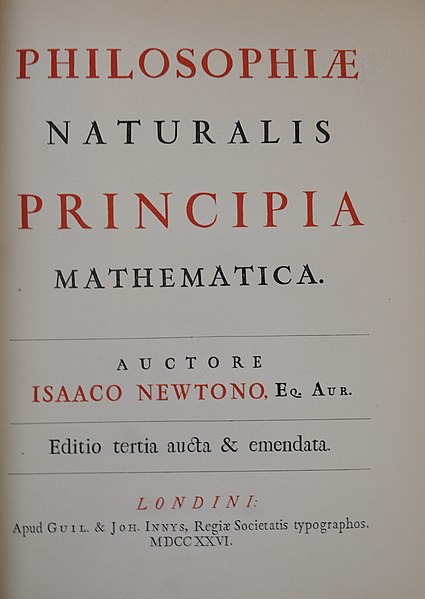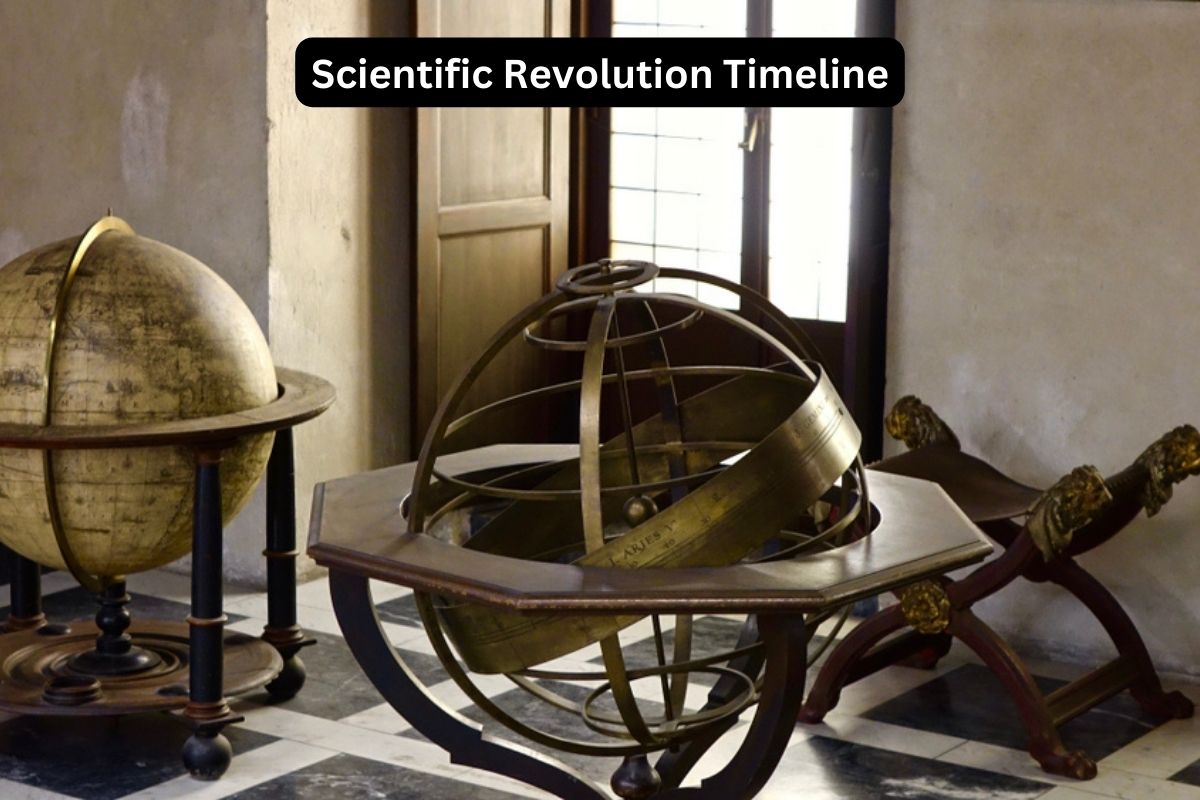The Scientific Revolution, spanning from the 16th to the 18th centuries, was a transformative period in human history marked by profound advancements in science, mathematics, and the understanding of the natural world.
During this era, brilliant minds challenged established beliefs, introduced groundbreaking theories, and laid the foundations for modern scientific inquiry.
This period witnessed notable figures such as Copernicus, Galileo, Kepler, Newton, and Boyle, who revolutionized our understanding of astronomy, physics, biology, and more.
Their contributions to empirical observation, experimental methodology, and mathematical reasoning led to a seismic shift in the way we perceive and investigate the universe, setting the stage for the development of modern science and the scientific method.
In this context, we explore the key events and figures that shaped the Scientific Revolution.
| Year | Event/Figure | Description |
|---|---|---|
| 1543 | Nicolaus Copernicus | Publishes “De revolutionibus orbium coelestium” proposing a heliocentric model of the solar system. |
| 1609 | Galileo Galilei | Uses a telescope to make astronomical observations, confirming Copernican heliocentrism and discovering the moons of Jupiter. |
| 1610 | Johannes Kepler | Publishes first two laws of planetary motion, describing elliptical orbits and the relationship between orbital periods and distances. |
| 1628 | William Harvey | Publishes “De Motu Cordis,” describing the circulation of blood in the human body. |
| 1637 | René Descartes | Publishes “Discourse on the Method,” emphasizing reason and mathematics in scientific inquiry. |
| 1655 | Christiaan Huygens | Publishes a treatise on the wave theory of light, contributing to optics. |
| 1662 | Robert Boyle | Formulates Boyle’s law, describing the relationship between pressure and volume of gases. |
| 1687 | Isaac Newton | Publishes “Philosophiæ Naturalis Principia Mathematica,” introducing laws of motion and universal gravitation. |
| 1707 | Edmund Halley | Predicts the return of Halley’s Comet using Newton’s laws. |
| 1735 | Carolus Linnaeus | Publishes “Systema Naturae,” laying the foundation for modern taxonomy. |
| 1753 | Leonhard Euler | Publishes “Introductio in analysin infinitorum,” contributing to the development of calculus. |
| 1777 | Antoine Lavoisier | Publishes “Méthode de nomenclature chimique,” introducing a systematic naming system for chemical elements and compounds. |
Timeline of the Scientific Revolution
1543: Nicolaus Copernicus publishes “De revolutionibus orbium coelestium,” proposing a heliocentric model of the solar system
Copernicus was a Polish mathematician and astronomer who proposed a revolutionary idea in his work published just before his death. In “De revolutionibus,” he presented a heliocentric model of the solar system.
Also Read: Facts About the Scientific Revolution
This model suggested that the Earth and other planets orbit the Sun, challenging the geocentric (Earth-centered) model that had dominated scientific thought for centuries.
Copernicus’ work laid the groundwork for the eventual acceptance of the heliocentric model, though it was met with resistance at the time.

1609: Galileo Galilei uses a telescope to make astronomical observations
Galileo Galilei, an Italian scientist, is often credited with the invention of the telescope. In 1609, he turned his telescope toward the night sky and made groundbreaking observations.
Galileo discovered numerous celestial objects, including the four largest moons of Jupiter (now known as the Galilean moons: Io, Europa, Ganymede, and Callisto).
This discovery provided strong evidence against the geocentric model and supported the heliocentric model proposed by Copernicus.
1610: Johannes Kepler publishes his first two laws of planetary motion, describing the elliptical orbits of planets
ohannes Kepler, a German mathematician and astronomer, formulated his first two laws of planetary motion in his work titled “Astronomia nova” (New Astronomy) published in 1609.
These laws were further elaborated in his book “Harmonices Mundi” (Harmony of the World) in 1619. Kepler’s laws described the motion of planets in the solar system:
- Kepler’s First Law (Law of Ellipses): Planets orbit the Sun in elliptical (oval-shaped) paths, with the Sun at one of the two foci of the ellipse.
- Kepler’s Second Law (Law of Equal Areas): A line segment joining a planet and the Sun sweeps out equal areas in equal periods of time. This law helped explain the varying speed of planets in their orbits.
Kepler’s laws provided a mathematical framework for understanding planetary motion, and they supported the heliocentric model. His work laid the foundation for Isaac Newton’s later development of the laws of motion and universal gravitation.

1628: William Harvey publishes “De Motu Cordis,” outlining his findings on the circulation of blood in the human body
William Harvey was an English physician and anatomist. In his groundbreaking work “De Motu Cordis,” published in 1628, Harvey presented his findings on the circulation of blood in the human body.
Prior to Harvey’s work, there were various misconceptions about how blood circulated within the body. Harvey’s meticulous observations and experiments demonstrated that the heart acted as a pump to circulate blood throughout the body in a closed circulatory system.
This discovery revolutionized the understanding of human physiology and laid the foundation for modern cardiology and the study of the circulatory system.
1637: René Descartes publishes “Discourse on the Method”
René Descartes was a French philosopher, mathematician, and scientist. In his work “Discourse on the Method,” published in 1637, Descartes outlined his philosophical and methodological principles. He emphasized the use of reason, skepticism, and mathematics as the basis for scientific inquiry.
Descartes’ famous statement “Cogito, ergo sum” (I think, therefore I am) reflected his belief in the importance of individual doubt and critical thinking.
His work had a profound impact on the development of modern philosophy and the scientific method, encouraging a rational and systematic approach to knowledge.
1655: Christiaan Huygens publishes a treatise on the wave theory of light
Christiaan Huygens was a Dutch mathematician, physicist, and astronomer. In 1655, he published a treatise titled “Traité de la Lumière” (Treatise on Light), in which he proposed a wave theory of light.
Huygens suggested that light propagated as a wave through a medium (the luminiferous aether) and explained various optical phenomena, such as reflection and refraction, using this wave model.
His wave theory of light was a significant contribution to the understanding of optics and laid the groundwork for later developments in wave optics, including the concept of wave interference and diffraction.

1662: Robert Boyle formulates Boyle’s law, describing the inverse relationship between the pressure and volume of a gas
Robert Boyle, an Irish natural philosopher, chemist, and physicist, formulated Boyle’s law in 1662. This law, also known as the Boyle–Mariotte law, describes the relationship between the pressure and volume of a gas at constant temperature.
Boyle’s law states that the pressure of a gas is inversely proportional to its volume when the temperature remains constant. In other words, as the volume of a gas decreases, its pressure increases, and vice versa.
This fundamental law laid the groundwork for the development of the field of thermodynamics and the understanding of gas behavior, which has numerous applications in science and engineering.
1687: Isaac Newton publishes “Philosophiæ Naturalis Principia Mathematica,” introducing his laws of motion and the law of universal gravitation
Isaac Newton, an English mathematician, physicist, and astronomer, published his magnum opus, “Philosophiæ Naturalis Principia Mathematica” (Mathematical Principles of Natural Philosophy), commonly known as the Principia, in 1687.
In this groundbreaking work, Newton introduced his three laws of motion and the law of universal gravitation. His laws of motion described the relationship between force, mass, and acceleration, providing a mathematical foundation for understanding the motion of objects.
The law of universal gravitation explained how every object in the universe attracts every other object with a force proportional to their masses and inversely proportional to the square of the distance between them. Newton’s work revolutionized physics and laid the foundation for classical mechanics.

1707: Edmund Halley accurately predicts the return of Halley’s Comet using Newton’s laws of motion and gravitation
Edmund Halley, an English astronomer and mathematician, made a significant contribution to the understanding of comets. He accurately predicted the return of a comet that would later be named Halley’s Comet after him.
Using Isaac Newton’s laws of motion and gravitation, Halley calculated the orbital path of the comet and predicted its return in 1758.
This successful prediction provided strong evidence for the validity of Newton’s laws and demonstrated the power of mathematical physics in predicting celestial phenomena.
1735: Carolus Linnaeus publishes “Systema Naturae,” laying the foundation for modern taxonomy and the classification of species
Carolus Linnaeus, a Swedish botanist, physician, and zoologist, published “Systema Naturae” in 1735. This work laid the foundation for modern taxonomy and the classification of species.
Linnaeus introduced a hierarchical system of organizing and naming living organisms based on their shared characteristics, leading to the binomial nomenclature system we still use today.
His work greatly simplified and standardized the naming and categorization of species, making it easier for scientists to communicate and study the diversity of life on Earth.
1753: Leonhard Euler publishes “Introductio in analysin infinitorum,” contributing to the development of calculus
Leonhard Euler, a Swiss mathematician, is regarded as one of the most prolific and influential mathematicians in history.
In “Introductio in analysin infinitorum” (Introduction to the Analysis of the Infinite), Euler made significant contributions to the development of calculus and mathematical analysis.
This work delved into the foundations of calculus and introduced concepts like the differential and integral calculus, infinite series, and functions.
Euler’s contributions not only helped formalize and expand upon the work of earlier mathematicians like Newton and Leibniz but also played a fundamental role in advancing mathematics, paving the way for various branches of science and engineering that rely on calculus.
1777: Antoine Lavoisier publishes “Méthode de nomenclature chimique”
Antoine Lavoisier, a French chemist often referred to as the “father of modern chemistry,” made significant strides in the understanding of chemical reactions and the development of a systematic approach to chemistry.
In 1777, he published “Méthode de nomenclature chimique” (Method of Chemical Nomenclature), which introduced a systematic naming system for chemical elements and compounds. Lavoisier’s work laid the foundation for modern chemical nomenclature, which is still in use today.
His experiments and theories, including the law of conservation of mass and the identification of oxygen as a key component in combustion and respiration, helped establish the modern field of chemistry, transforming it from a speculative discipline into an empirical science.
